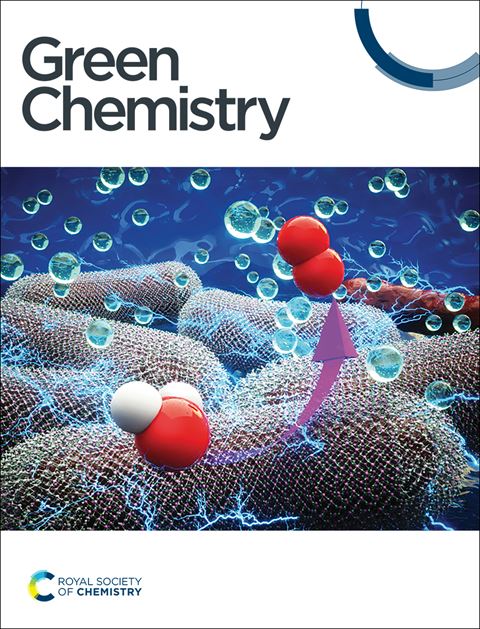Advances in molecular interfacial engineering of heterojunctions for photocatalytic CO2 reduction
IF 9.2
1区 化学
Q1 CHEMISTRY, MULTIDISCIPLINARY
引用次数: 0
Abstract
The unsustainable reliance on fossil fuels has triggered an alarming accumulation of atmospheric CO2, exacerbating global energy insecurity and environmental degradation. Photocatalytic CO2 reduction, an artificial photosynthetic paradigm leveraging solar energy to convert CO2 into renewable hydrocarbons (e.g., CH4, C2H4, CH3COOH), has emerged as a prominent strategy in green chemistry to reconcile carbon neutrality with sustainable fuel production. This review critically examines interfacial engineering of semiconductor heterojunctions, which governs charge carrier dynamics, active site exposure, and reaction pathways by manipulating interfacial interactions (π–π stacking, coulombic forces, van der Waals forces, hydrogen bonding, covalent bonding). We articulate the mechanistic synergy between band alignment principles and green chemistry frameworks, emphasizing how interfacial effects orchestrate thermodynamics (e.g., CO2 activation energy barriers) and kinetics (e.g., C–C coupling rates) to enhance selectivity and quantum efficiency of photocatalytic CO2 reduction. By addressing critical challenges confronting scalable CO2 valorization, including charge recombination and product specificity limitations, we propose forward-looking perspectives integrating atomic-scale bond modulation, circular material lifecycles, and energy-autonomous photoreactor designs. By establishing conceptual bridges between interfacial science and green process engineering, this work provides a framework to guide the rational design of interfacial interactions, advancing CO2 transformation from an ecological liability to a cornerstone of circular carbon economies.
光催化CO2还原异质结分子界面工程研究进展
对化石燃料的不可持续依赖引发了大气中二氧化碳的惊人积累,加剧了全球能源不安全和环境恶化。光催化CO2还原是一种利用太阳能将CO2转化为可再生碳氢化合物(如CH4, C2H4, CH3COOH)的人工光合模式,已成为绿色化学中调和碳中和与可持续燃料生产的重要策略。这篇综述批判性地研究了半导体异质结的界面工程,它通过操纵界面相互作用(π -π堆叠、库仑力、范德华力、氢键、共价键)来控制载流子动力学、活性位点暴露和反应途径。我们阐明了带排列原理和绿色化学框架之间的机制协同作用,强调了界面效应如何协调热力学(例如CO2活化能垒)和动力学(例如C-C耦合速率),以提高光催化CO2还原的选择性和量子效率。通过解决可扩展CO2增值所面临的关键挑战,包括电荷重组和产品特异性限制,我们提出了整合原子尺度键调制,循环材料生命周期和能量自主光反应器设计的前瞻性观点。通过在界面科学和绿色过程工程之间建立概念桥梁,本工作提供了一个框架来指导界面相互作用的合理设计,推动二氧化碳从生态负担转变为循环碳经济的基石。
本文章由计算机程序翻译,如有差异,请以英文原文为准。
求助全文
约1分钟内获得全文
求助全文
来源期刊

Green Chemistry
化学-化学综合
CiteScore
16.10
自引率
7.10%
发文量
677
审稿时长
1.4 months
期刊介绍:
Green Chemistry is a journal that provides a unique forum for the publication of innovative research on the development of alternative green and sustainable technologies. The scope of Green Chemistry is based on the definition proposed by Anastas and Warner (Green Chemistry: Theory and Practice, P T Anastas and J C Warner, Oxford University Press, Oxford, 1998), which defines green chemistry as the utilisation of a set of principles that reduces or eliminates the use or generation of hazardous substances in the design, manufacture and application of chemical products. Green Chemistry aims to reduce the environmental impact of the chemical enterprise by developing a technology base that is inherently non-toxic to living things and the environment. The journal welcomes submissions on all aspects of research relating to this endeavor and publishes original and significant cutting-edge research that is likely to be of wide general appeal. For a work to be published, it must present a significant advance in green chemistry, including a comparison with existing methods and a demonstration of advantages over those methods.
 求助内容:
求助内容: 应助结果提醒方式:
应助结果提醒方式:


